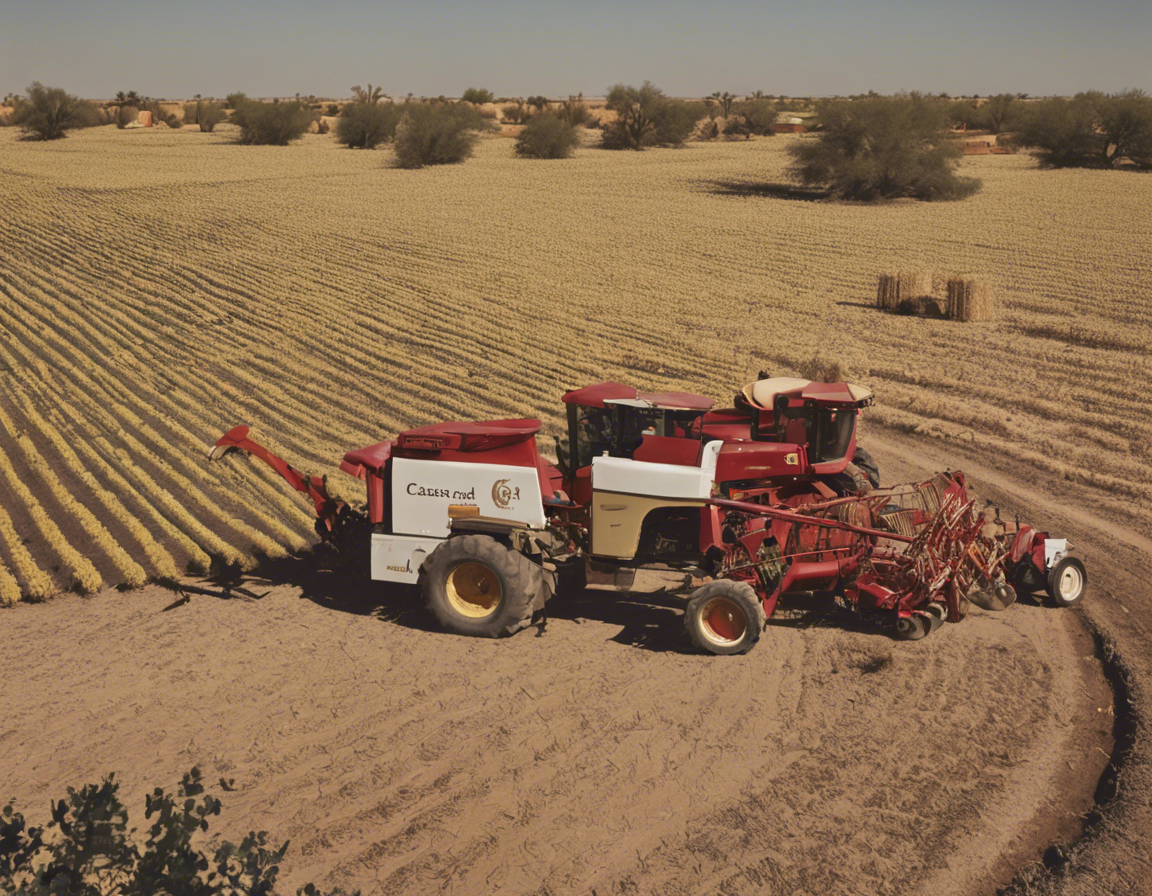Introduction:
Arizona is known for its diverse agricultural landscape and rich history of farming practices. One of the prominent agricultural centers in the state is Casa Grande, located in the heart of Pinal County. Casa Grande, a city with a rich agricultural heritage, has been a hub for farming activities for centuries. From cotton fields to citrus orchards, Casa Grande has a significant contribution to Arizona’s agricultural economy.
The History of Casa Grande Agriculture:
Casa Grande’s agricultural roots date back to ancient civilizations such as the Hohokam people, who constructed extensive irrigation canals to cultivate crops in the arid desert environment. The legacy of advanced agricultural practices continues to thrive in Casa Grande, with modern farmers employing innovative techniques to maximize crop yield and sustainability.
Crops Grown in Casa Grande:
Cotton is one of the primary crops cultivated in Casa Grande, benefiting from the region’s warm climate and fertile soil. Cotton fields stretch across the landscape, symbolizing the city’s agricultural prowess. In addition to cotton, Casa Grande produces a variety of crops such as alfalfa, barley, vegetables, and citrus fruits. The diverse range of crops reflects the region’s ability to adapt to different growing conditions and market demands.
Farm-to-Table Practices in Casa Grande:
With an increasing emphasis on sustainable agriculture and locally sourced produce, Casa Grande farmers have embraced farm-to-table practices to connect consumers with fresh, high-quality food products. Farmers markets, community-supported agriculture (CSA) programs, and farm tours offer opportunities for residents and visitors to experience the rich bounty of Casa Grande’s agricultural heritage firsthand.
Challenges and Opportunities in Casa Grande Agriculture:
Despite its agricultural abundance, Casa Grande faces challenges such as water scarcity, climate change, and economic pressures. Farmers are adopting water-saving technologies, organic farming methods, and crop diversification to mitigate these challenges and build a resilient agricultural sector. Additionally, Casa Grande’s strategic location and access to transportation networks present opportunities for expanding market reach and promoting agritourism initiatives.
The Future of Casa Grande Agriculture:
Looking ahead, Casa Grande’s agricultural sector is poised for growth and innovation. By fostering collaboration between farmers, researchers, policymakers, and the community, Casa Grande can enhance its agricultural productivity, sustainability, and economic viability. Embracing technology, education, and sustainable practices will be key in shaping the future of agriculture in Casa Grande and ensuring a thriving agri-food sector for generations to come.
Frequently Asked Questions (FAQs):
- What are the main agricultural crops grown in Casa Grande?
-
Cotton, alfalfa, barley, vegetables, and citrus fruits are some of the primary crops cultivated in Casa Grande.
-
How do Casa Grande farmers address water scarcity in agriculture?
-
Farmers in Casa Grande adopt water-saving technologies such as drip irrigation, conservation practices, and crop rotation to optimize water use efficiency.
-
Is organic farming practiced in Casa Grande?
-
Yes, some farmers in Casa Grande practice organic farming methods to promote soil health, biodiversity, and sustainable agriculture.
-
Are there agritourism opportunities in Casa Grande?
-
Casa Grande offers agritourism experiences such as farm tours, farmers markets, and educational programs to connect visitors with the region’s agricultural heritage.
-
What role does Casa Grande play in Arizona’s agricultural economy?
-
Casa Grande is a significant agricultural center in Arizona, contributing to the state’s economy through crop production, agribusinesses, and food processing industries.
-
How can consumers support local agriculture in Casa Grande?
-
Consumers can support local agriculture in Casa Grande by purchasing produce from farmers markets, participating in CSA programs, and advocating for sustainable farming practices.
-
What are the key sustainability challenges faced by Casa Grande farmers?
-
Sustainability challenges in Casa Grande agriculture include water scarcity, soil degradation, climate change impacts, and balancing economic viability with environmental conservation.
-
What opportunities exist for innovation in Casa Grande agriculture?
-
Innovation opportunities in Casa Grande agriculture include adopting precision farming technologies, diversifying crop production, exploring alternative energy sources, and promoting agtech startups.
-
How is Casa Grande preserving its agricultural heritage for future generations?
-
Casa Grande preserves its agricultural heritage through educational programs, historic preservation efforts, agricultural festivals, and partnerships with local schools and community organizations.
-
What are some upcoming trends in Casa Grande agriculture?
- Emerging trends in Casa Grande agriculture include vertical farming, agritourism development, value-added food products, blockchain technology for traceability, and sustainable farming certifications.
Conclusion:
Casa Grande’s agricultural landscape is a testament to the region’s resilience, innovation, and deep-rooted connection to the land. From ancient irrigation systems to modern farming practices, Casa Grande continues to evolve as a thriving agricultural hub in Arizona. By embracing sustainability, technology, and community collaboration, Casa Grande is poised to lead the way in shaping the future of agriculture and ensuring a bountiful harvest for generations to come.




